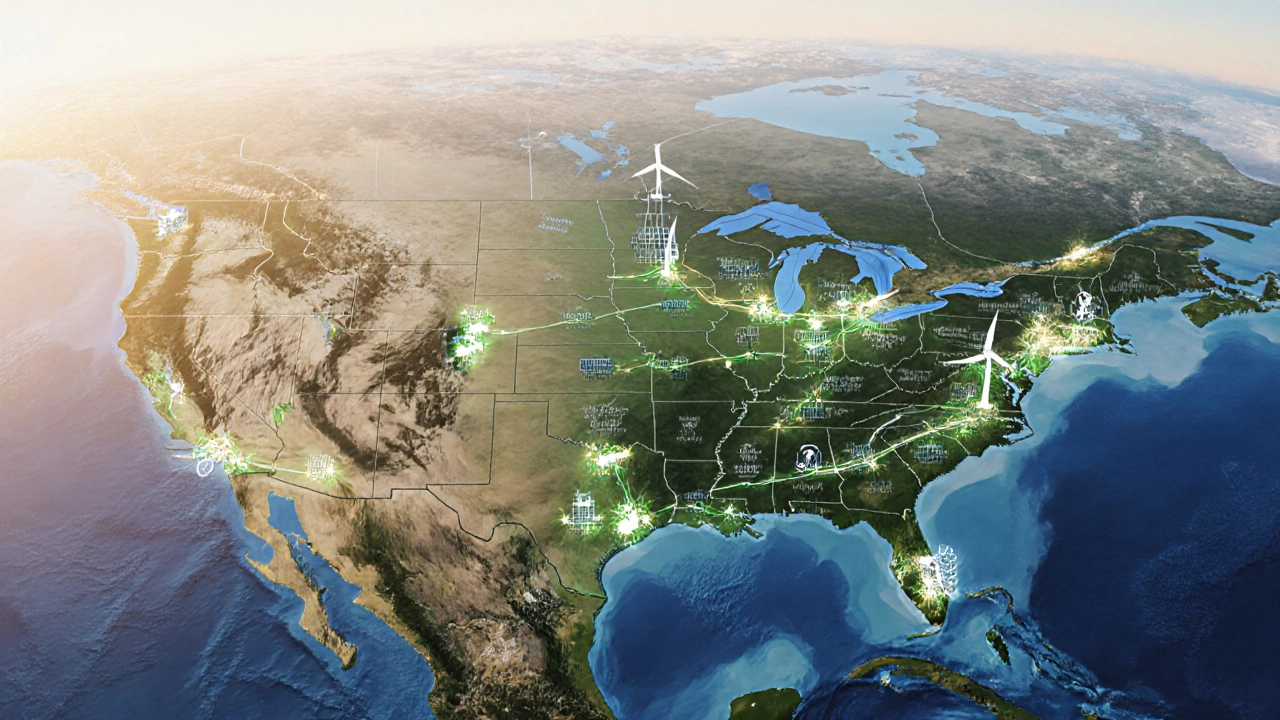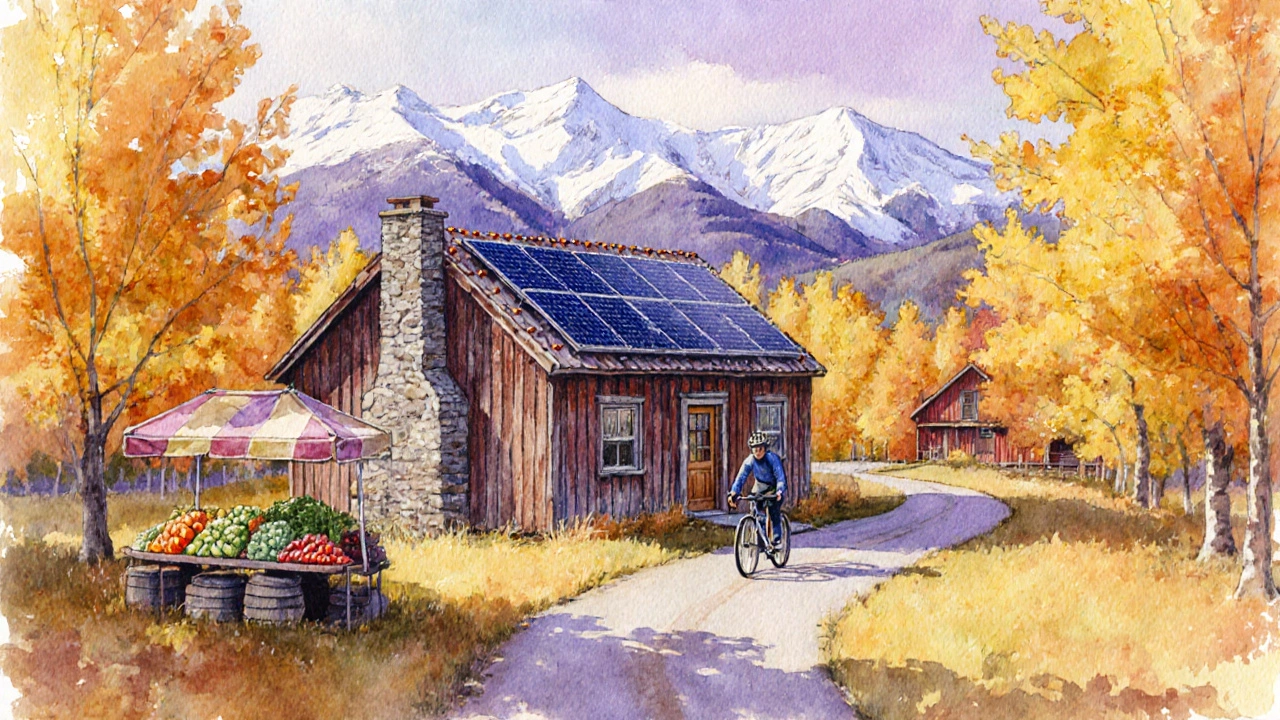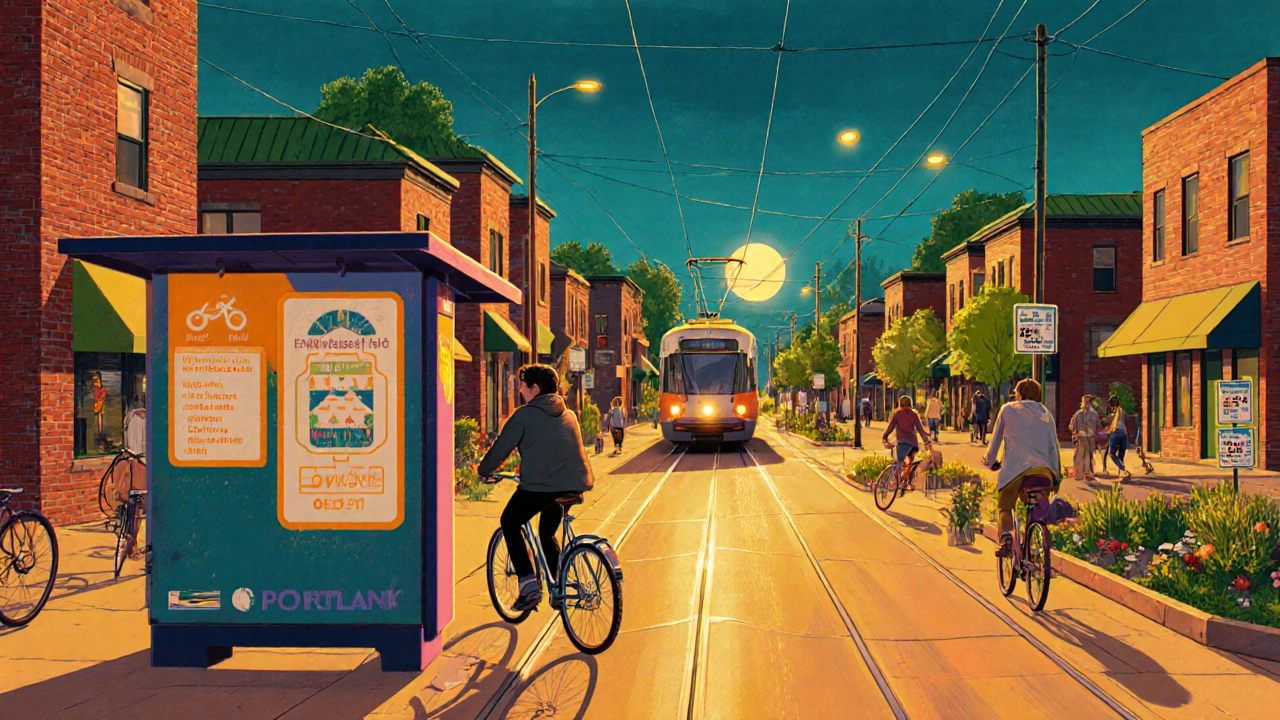Greenest Places in the USA: Top Eco‑Friendly Destinations
 Oct, 26 2025
Oct, 26 2025
Eco Destination Score Calculator
How important are these sustainability factors to your trip?
Vermont
Portland, Oregon
Boulder, Colorado
Ever wonder which corner of the United States truly lives the green life? From solar‑powered towns to bike‑friendly streets, the country hides a handful of spots that put sustainability front and center. If you’re hunting a vacation spot that matches your eco‑values-or just curious about where America’s cleanest air, most renewable energy, and thriving eco‑cottage scene converge-this guide has you covered.
How We Pick the Greenest Spots
We looked at three core metrics that matter to eco‑travelers:
- Renewable energy share - the percentage of electricity generated from wind, solar, hydro, or biomass.
- Public‑transport and bike‑friendly score - how easy it is to get around without a car.
- Green building certifications - number of LEED‑certified or Net‑Zero structures, especially cottages that welcome short‑term guests.
Data comes from the U.S. Energy Information Administration (2024), the American Public Transit Association, and the U.S. Green Building Council.
Vermont - The Silicon Valley of Sustainable Living
Vermont is a New England state that ranks in the top five for renewable electricity, with over 45% of its power coming from hydro and wind. Its small towns, like Stowe, feature a growing number of eco‑friendly cottages that meet LEED Gold standards. The state’s Green Mountain Power offers incentives for solar roofs, and the bike‑lane network stretches over 1,200 miles, making two‑wheel travel a breeze.
Why it feels green: you’ll see solar panels on nearly every roof, community farms sell produce at weekly markets, and the local tourism board highlights “green stays” that use reclaimed wood and low‑flow fixtures.
Portland, Oregon - A Blueprint for Urban Sustainability
Portland, Oregon consistently tops lists for eco‑friendly cities. About 38% of its electricity comes from renewable sources, and the city’s famed “20‑minute neighborhoods” encourage walking and cycling. The Portland City Council mandates that new multi‑family buildings earn at least a Silver LEED rating, and many boutique cottages in the outskirts feature composting toilets and rainwater harvesting.
Portland’s public transit includes a streetcar system, light rail, and a bike‑share program with over 1,600 bikes, cutting car trips by 17% since 2020.
Asheville, North Carolina - Mountain‑Side Green Living
Asheville sits in the Blue Ridge Mountains and draws eco‑tourists with its focus on local food, renewable energy, and sustainable lodging. The city’s utility, Duke Energy, powers roughly 32% of homes with solar or hydro. Asheville’s Green Business Program rewards cabins and cottages that achieve Energy Star certification, and the town’s “Bike Loop” offers 150 miles of scenic routes.
Visitors can stay in a historic cabin that runs on a micro‑grid fed by nearby solar farms, delivering a genuine low‑carbon getaway.
Boulder, Colorado - High‑Altitude Eco Hub
Boulder boasts a 42% renewable electricity mix, thanks to wind farms on the plains and solar arrays on the mountain slopes. The city’s “Boulder Green Spaces” initiative protects open land and encourages community gardens.
Eco‑cottage owners often install geothermal heating, which cuts heating bills by up to 60% compared to traditional furnaces. Boulder’s bus system runs on biodiesel, and the city’s bike‑share fleet is 100% electric.

Bar Harbor, Maine - Coastal Conservation Champion
Bar Harbor sits on Mount Desert Island near Acadia National Park, an area known for strict land‑use policies. Renewable energy makes up 39% of the town’s supply, largely from offshore wind projects.
Many seaside cottages here use sea‑water heat pumps and solar shingles, blending modern tech with classic New England charm. The town’s free shuttle runs on electricity, shrinking traffic in the narrow historic streets.
Eugene, Oregon - Green College Town
Eugene is home to the University of Oregon, a research hub for sustainable technologies. The city’s renewable share sits at 35%, bolstered by community solar farms.
Eco‑cottage rentals near the Willamette River include rain gardens that filter runoff before it reaches the waterway. Eugene’s extensive bike lanes and a downtown electric trolley make car‑free travel simple.
Twin Cities, Minnesota - Mid‑West Eco Innovation
Minneapolis‑Saint Paul together form the Twin Cities, a region where green roofs cover over 1,000 acres and renewable electricity reaches 40%.Many suburban cottages feature passive solar design, and the cities’ Metro Transit system operates on a fleet of electric buses. The “Great River Greenway” connects neighborhoods with 30 miles of bike‑friendly paths.
Sedona, Arizona - Desert Sustainability
Sedona may be known for red rocks, but it’s also a leader in desert‑friendly building. Solar power supplies 48% of local electricity, and water‑saving regulations limit outdoor irrigation.
Eco‑cottage owners often use earth‑tube cooling systems, reducing AC usage by up to 70%. The city’s shuttle network runs on biodiesel, and the “Sedona Bike Trail” offers stunning, low‑impact rides.

Seattle, Washington - Pacific Northwest Powerhouse
Seattle draws 55% of its electricity from hydroelectric dams, the highest renewable share among large U.S. cities. The city’s “Green Seattle” program encourages LEED‑certified lodging, and many waterfront cottages use wave‑energy turbines.
Seattle’s extensive light‑rail system, electric ferries, and a citywide bike‑share network keep emissions low even as the population grows.
Quick Comparison of the Greenest Spots
| Location | Renewable Energy Share | Public‑Transport Score (1‑10) | LEED‑Certified Cottages | Notable Eco Feature |
|---|---|---|---|---|
| Vermont (Stowe) | 45% | 8 | 12 | Hydro‑driven grid |
| Portland, OR | 38% | 9 | 15 | Bike‑share 1,600+ |
| Asheville, NC | 32% | 7 | 10 | Micro‑grid cabins |
| Boulder, CO | 42% | 8 | 9 | Geothermal heating |
| Bar Harbor, ME | 39% | 6 | 8 | Offshore wind |
| Eugene, OR | 35% | 7 | 7 | Community solar |
| Twin Cities, MN | 40% | 8 | 11 | Green roofs |
| Sedona, AZ | 48% | 6 | 6 | Earth‑tube cooling |
| Seattle, WA | 55% | 9 | 14 | Hydro power |
Tips for Choosing an Eco‑Friendly Cottage
- Check for LEED or EarthCheck certification-these ensure energy‑efficient design.
- Look for properties that source water from rain barrels or grey‑water systems.
- Prefer rentals that offer bike rentals or partner with local transit passes.
- Read guest reviews for real‑world performance of solar panels or heating systems.
- Support hosts who donate a portion of earnings to local conservation groups.
Common Pitfalls and How to Avoid Them
Even green destinations can have hidden carbon costs. Here’s what to watch for:
- “Green‑washed” listings - if a cottage only mentions recycling, it might still run on fossil‑fuel electricity. Verify the energy source.
- Long flights - a short‑haul flight can outweigh a weekend’s low‑impact stay. Consider driving or taking a train if feasible.
- Excessive amenities - hot tubs, indoor pools, and large HVAC systems can creep energy usage up. Choose simpler accommodations.
By asking the right questions, you keep your vacation footprint truly low.
Next Steps for the Eco‑Travel Curious
Ready to book a stay? Start by narrowing down which green metric matters most to you-renewable power, bikeability, or certified building standards. Then use the comparison table above to pick a region that aligns with your values. Finally, search for “eco cottage” in the chosen city and filter by certification. Most platforms now let you see a property’s carbon rating at a glance.
Which U.S. state has the highest renewable energy share?
Washington leads the pack, pulling about 55% of its electricity from hydroelectric dams, followed closely by Vermont and Colorado.
How can I verify a cottage’s green certification?
Ask the host for the LEED, EarthCheck, or Energy Star badge number. Most certified properties display a QR code that links to the official registry.
Is it cheaper to stay in an eco‑cottage than a regular hotel?
Often yes, especially in off‑season or rural areas. Lower operating costs from solar power and efficient insulation let owners offer competitive rates.
What are some low‑impact activities to do in these green spots?
Try hiking on designated trails, renting a bike, joining a community garden tour, or taking a guided kayak trip that respects local wildlife.
Do these cities offer carbon‑offset programs for travelers?
Many do. Seattle, Portland, and Boulder let you add a small fee during checkout that funds local tree‑planting or renewable‑energy projects.